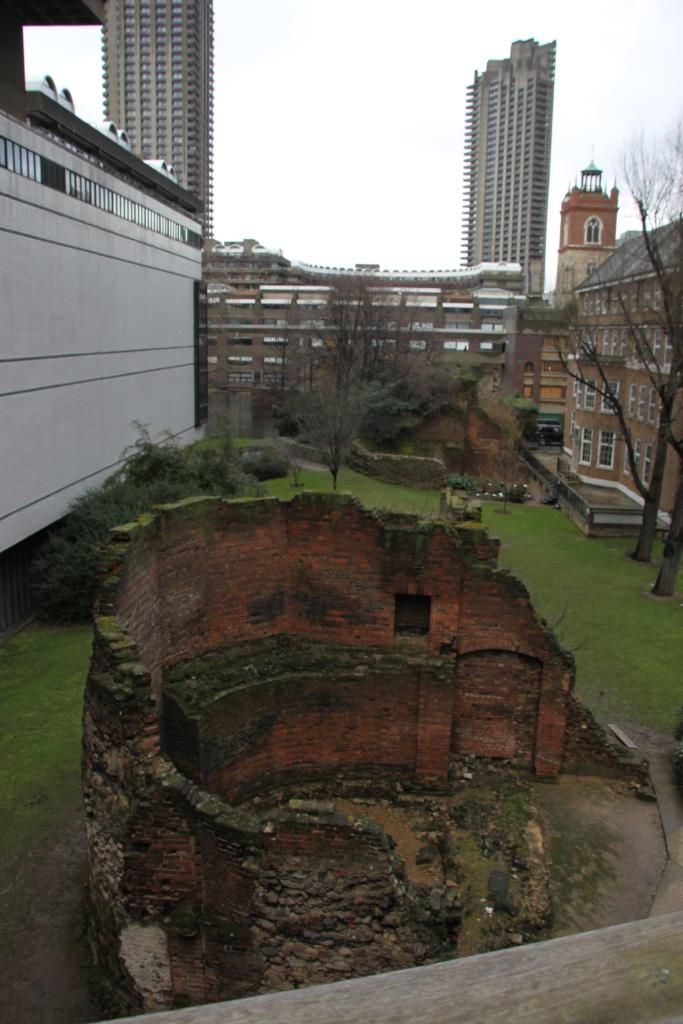
The wall was 6-9 feet wide and 18 feet high with a bunch of bastions about 150 feet apart, built around the late 2nd century AD after the construction of the main court. The wall was designed to protect against the attacks by the Saxons and the bastions would protrude from the walls so as to provide protection to the walls and pick off the Saxon tribesmen who might want to attack the walls or climb them. In the back, you can see the beginnings of another bastion. The Romans could have also mounted big battle catapults inside these bastions. This photo has been taken from top of the barbican high walk.
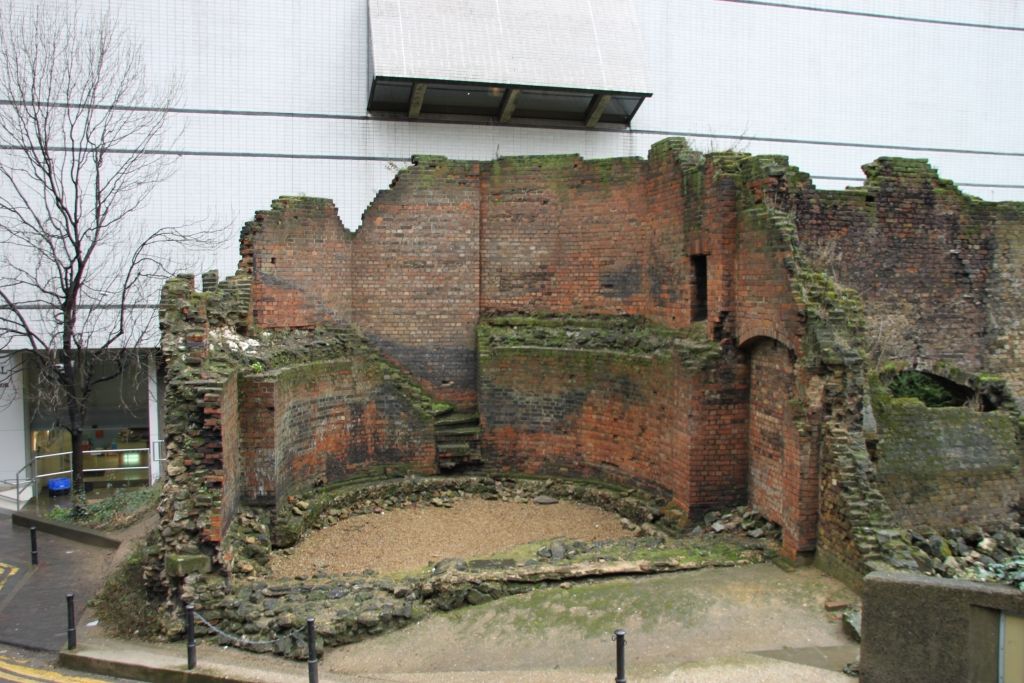
Walking down the ramp, you see the inner curved structure of the bastion.


There would have been a ceiling in the middle of the wall, this staircase would have allowed one to walk up to the floor where the catapult would have been kept. On the right, you can see how the wall has been repaired with metal staples.

This doorway would have allowed the legionnaires to exit the bastion and then walk out on the top of the wall.
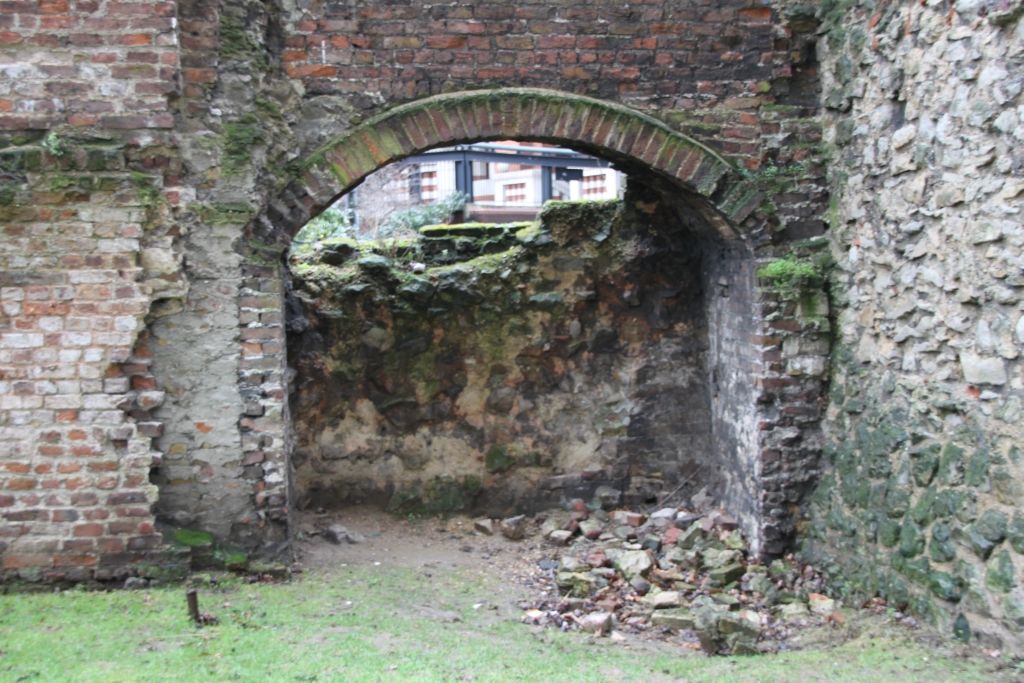

A doorway at the bottom of the wall. The wall is green with moss and lichen.

These pillars would be to strengthen the wall.

Some wooden scaffolding to support the age old Roman wall.

Walking down the wall, I notice an alcove. Looks like a hearth of something.


It does look like a hearth, and a white stone lintel as can be seen from the right hand side photograph
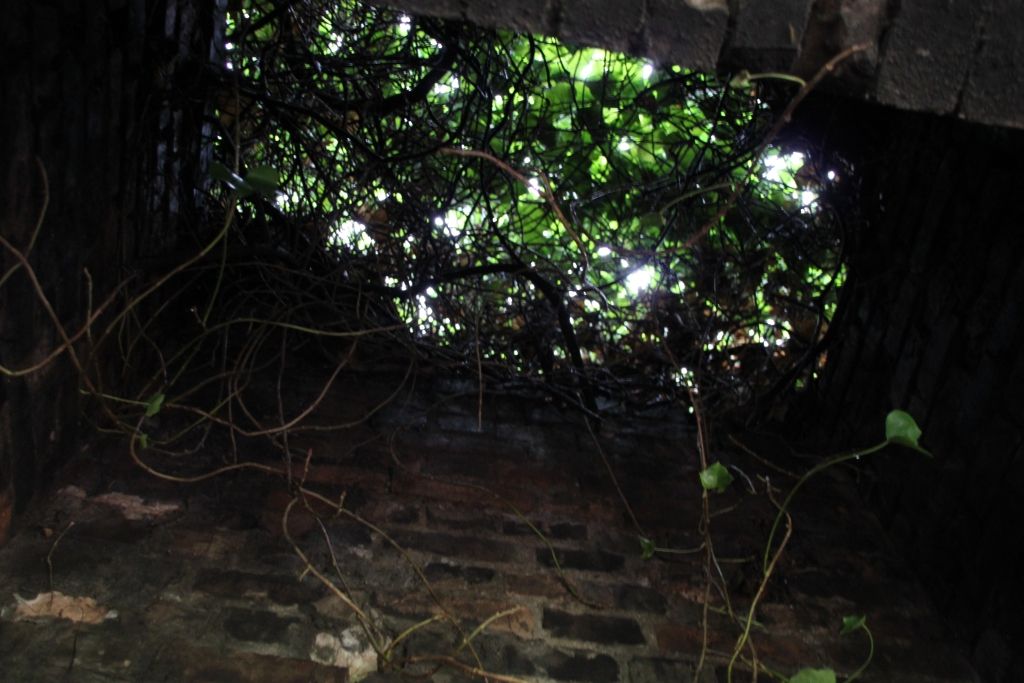
Poked my head inside the hearth and peeked up. It was open. Is this a chimney to let the smoke out? Or worse, was this the outlet to a loo or something? I withdrew hastily..
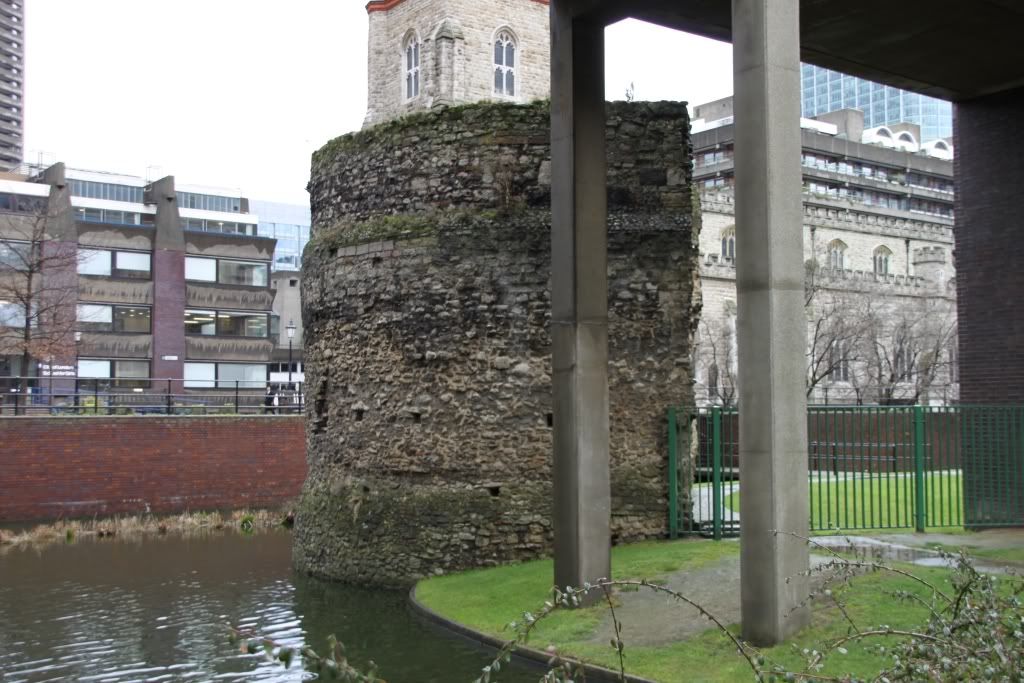

I come to the end of the wall where there is a half a bastion left. A different shaped bastion without the accoutrements that we saw in the previous one. Then reversed direction and went right back to the beginning and then crossed the road to the other bit of the London Wall.

There is a semi transparent glass wall with a painting of what the fort would have looked like.
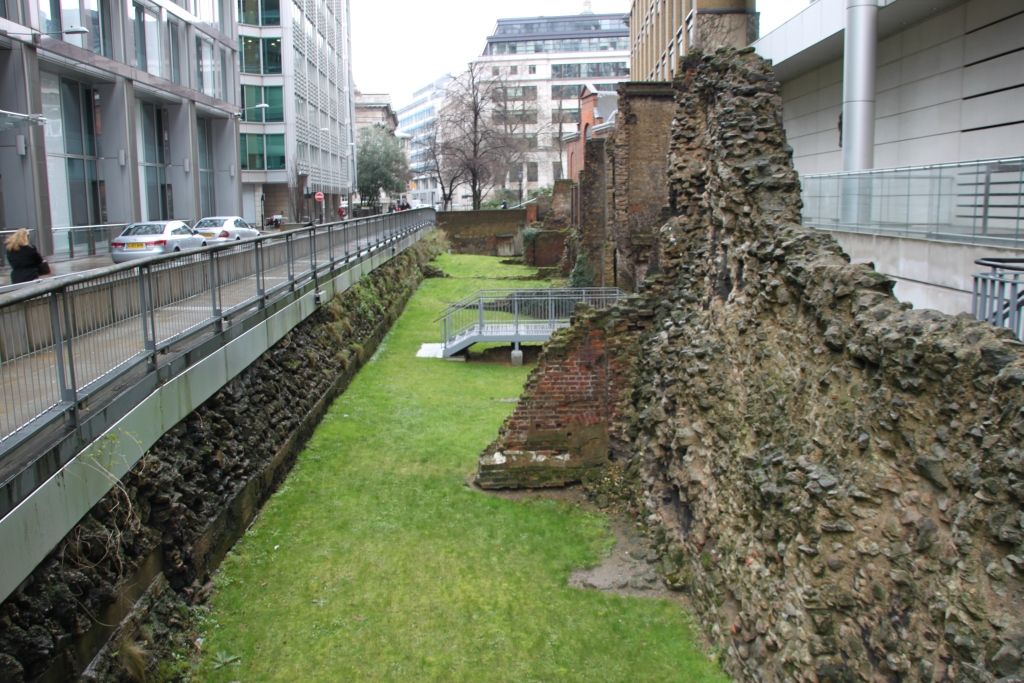
Peeking behind the glass wall is rest of the London Wall. Strangely enough, we have to thank the Germans for bombing the heck out of this area which exposed these walls. The area where I am standing was hit by several bombs over several days and significantly flattened and damaged.

As part of the preservation, this bridge was built so that archaeologists can walk over the ruins.

One of the main bastions of the wall. This was a square one as opposed to a round one, see the map above. Also ironically this wall actually helped stop the Great Fire of 1666 from spreading northwards. While the wall was designed to keep the enemy out, it turned around and kept fire the enemy in.

The Roman walls were then actually built into the fabric of the city itself as this boundary marker shows.
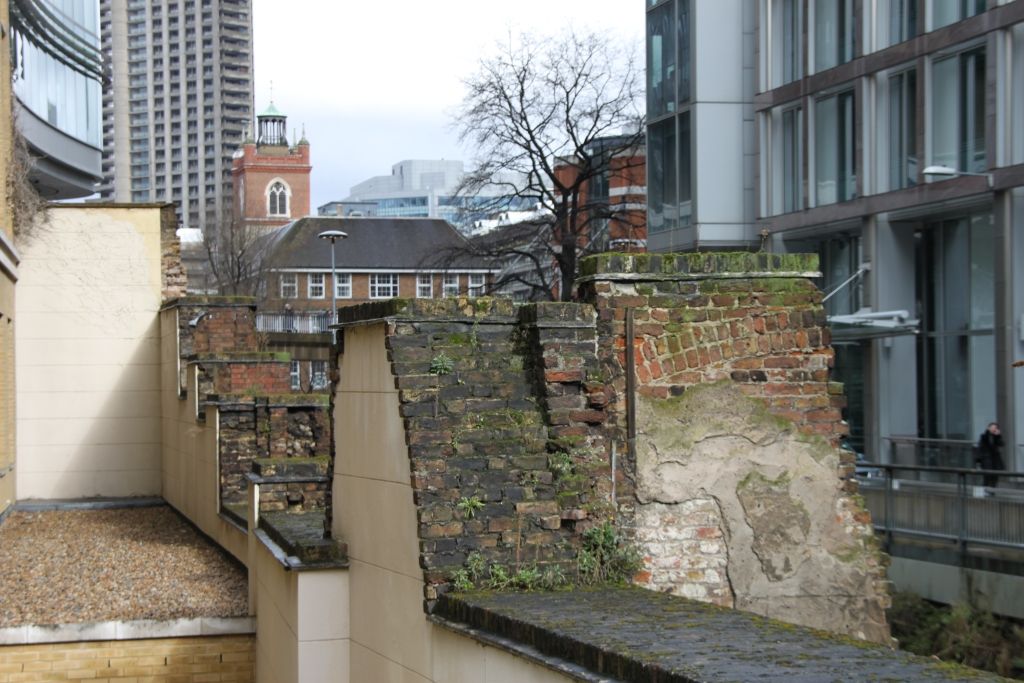
Observing the wall from the other side, you can make out how the much newer building has made the old roman wall as a seamless extension of itself.

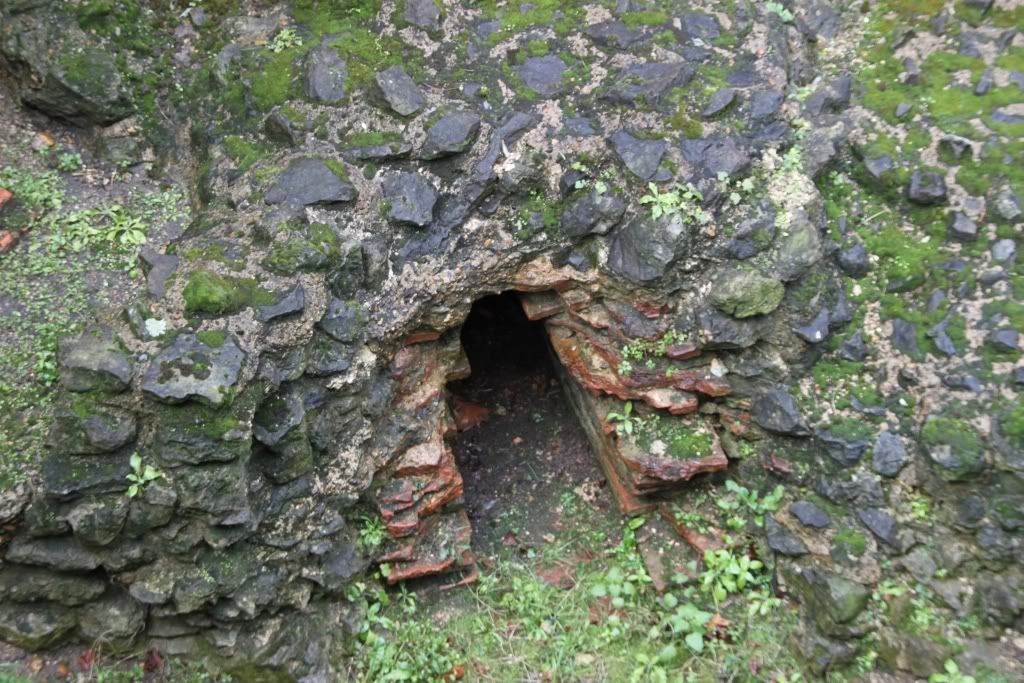
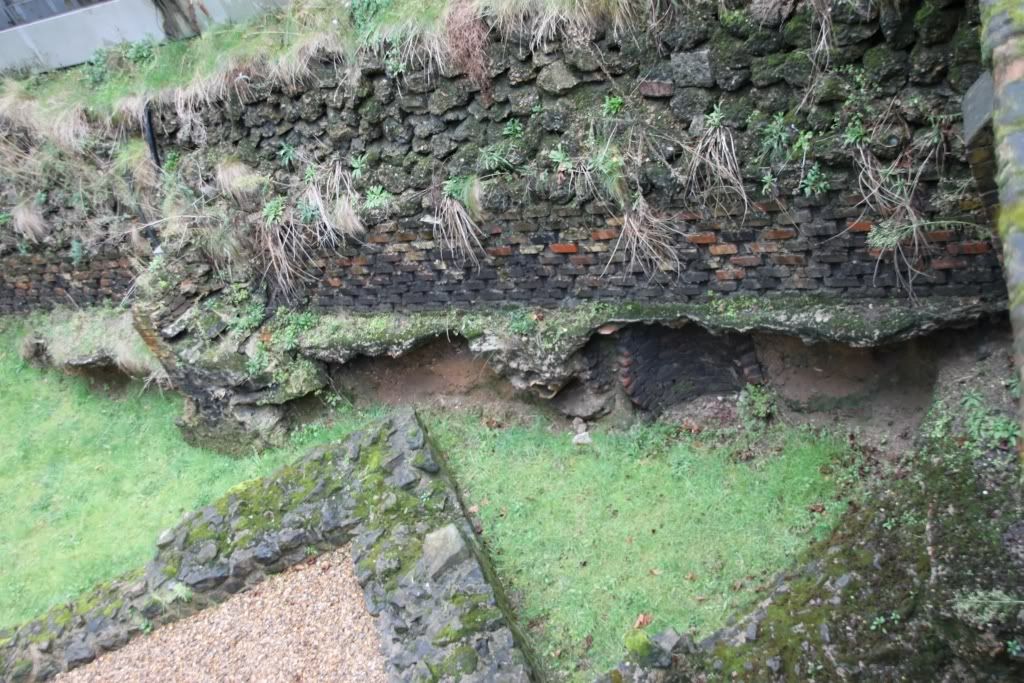
The end of the wall with another bastion looks like. You can see the sewage tunnels on the bottom left and heating / water brick formations on the right. Could also have been a bathhouse.

At the end, there is another glass window showing a painting of how the wall would have looked like in the past.

Looking back down the wall. That’s is, that’s all that is left of this outpost of the Roman Empire. To walk up and down and observe the last remnants of imperial power is a bit discombobulating indeed. What arrogance, what power, what design those Romans had. They established their presence and almost two millennia later, I am standing here watching their bricks and mortar again rise up in my imagination.

1 comment:
Excellent photos. Thank you for posting. Judy Swink, San Diego, CA USA
Post a Comment